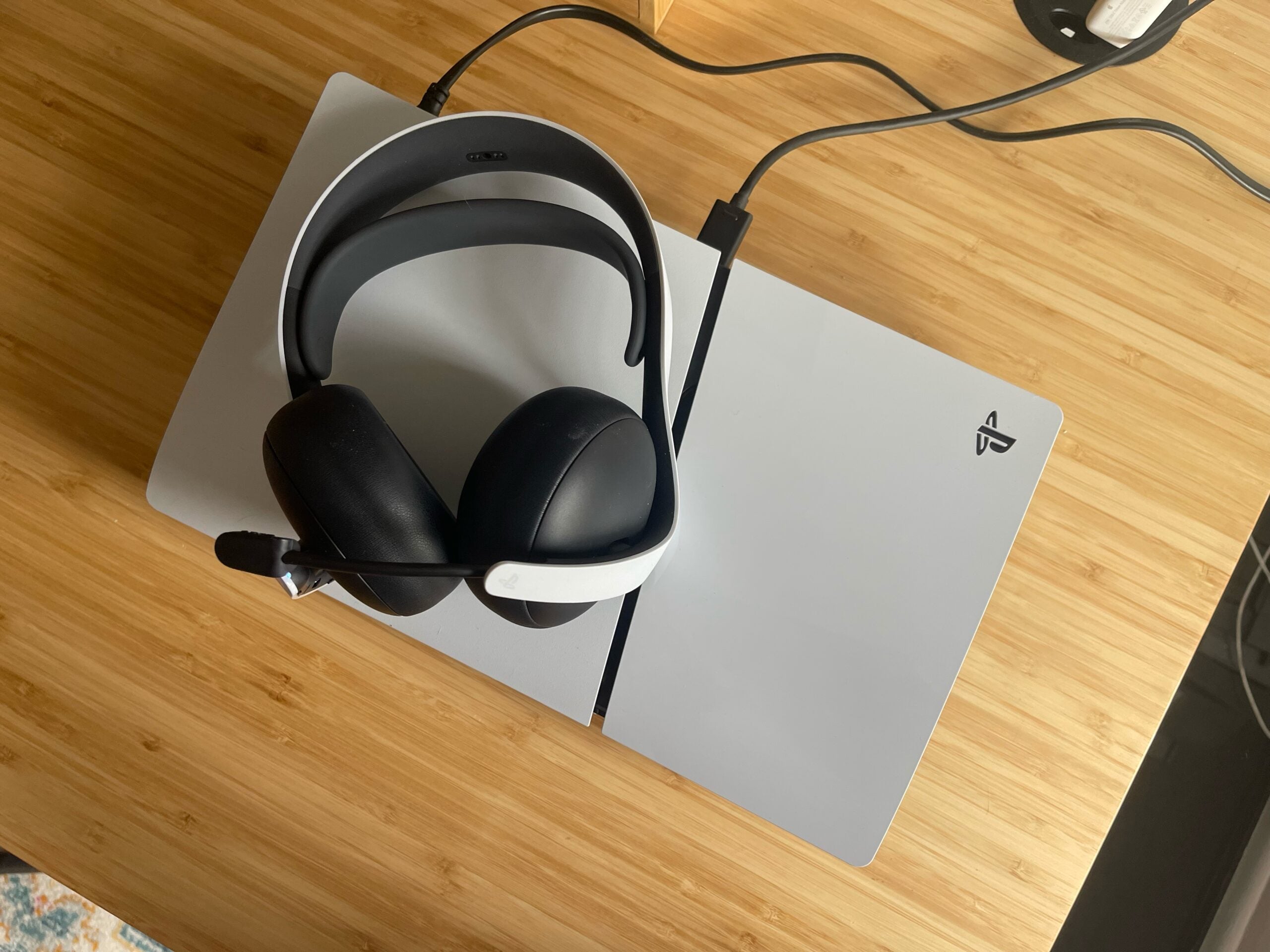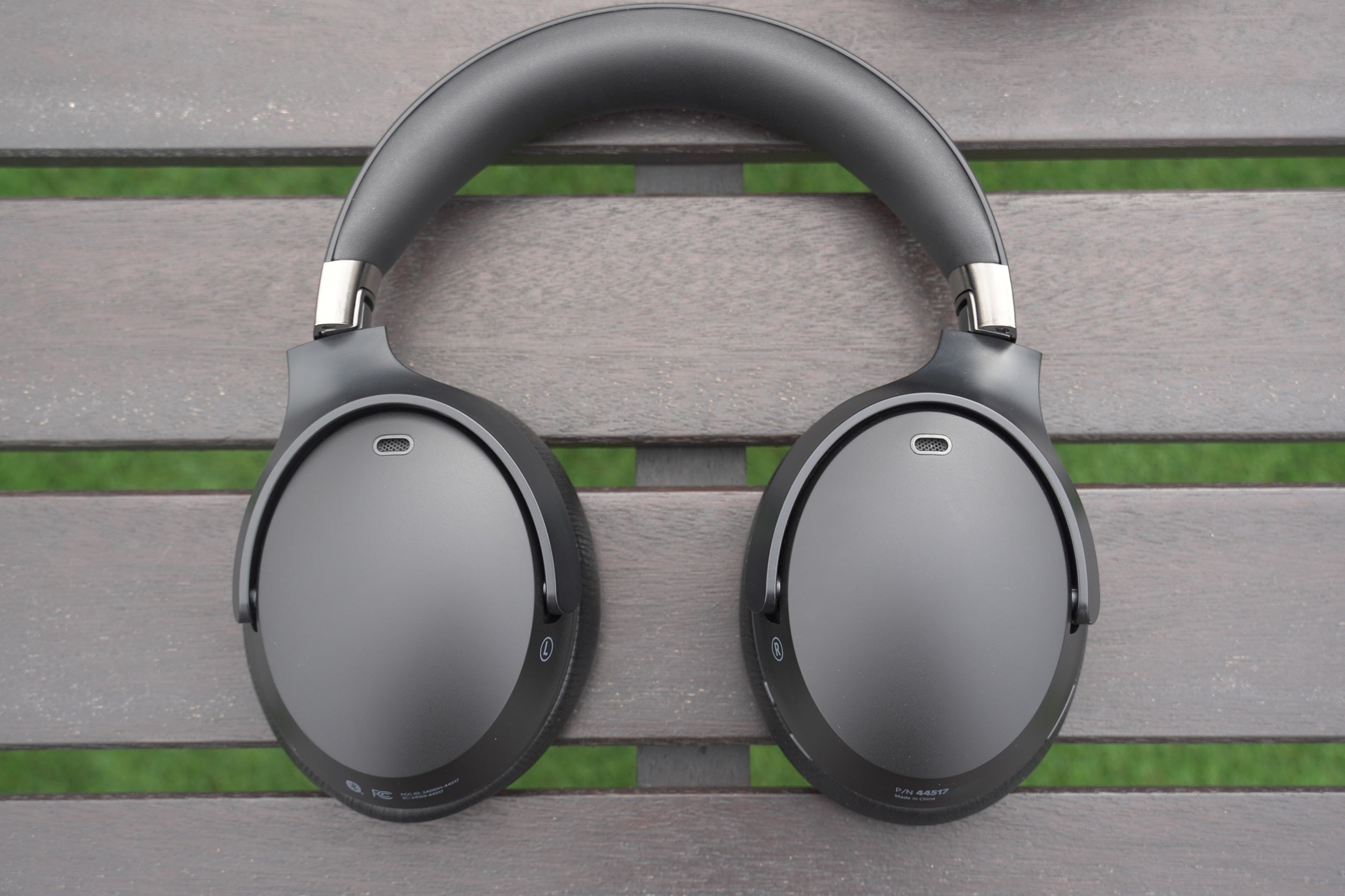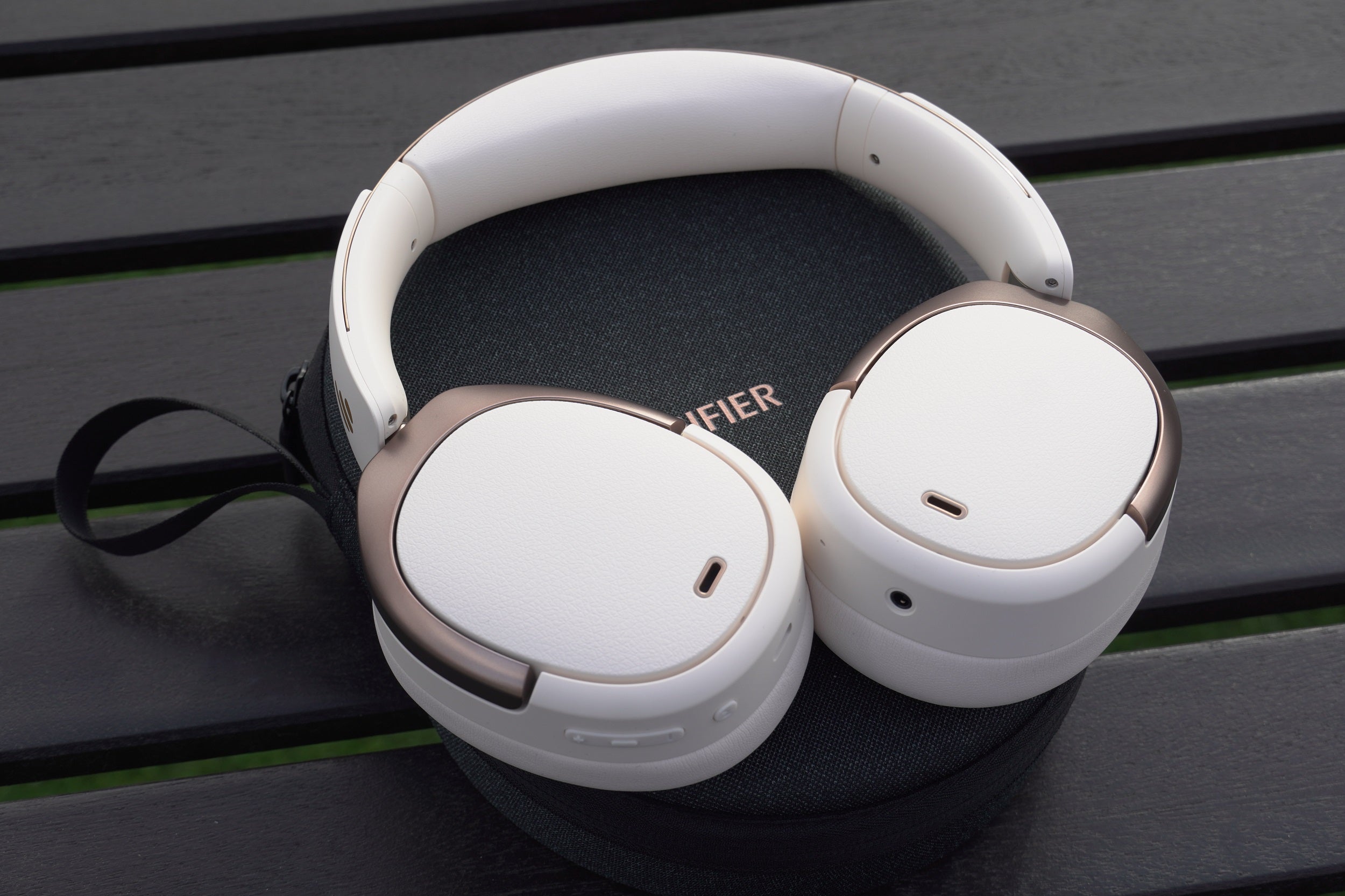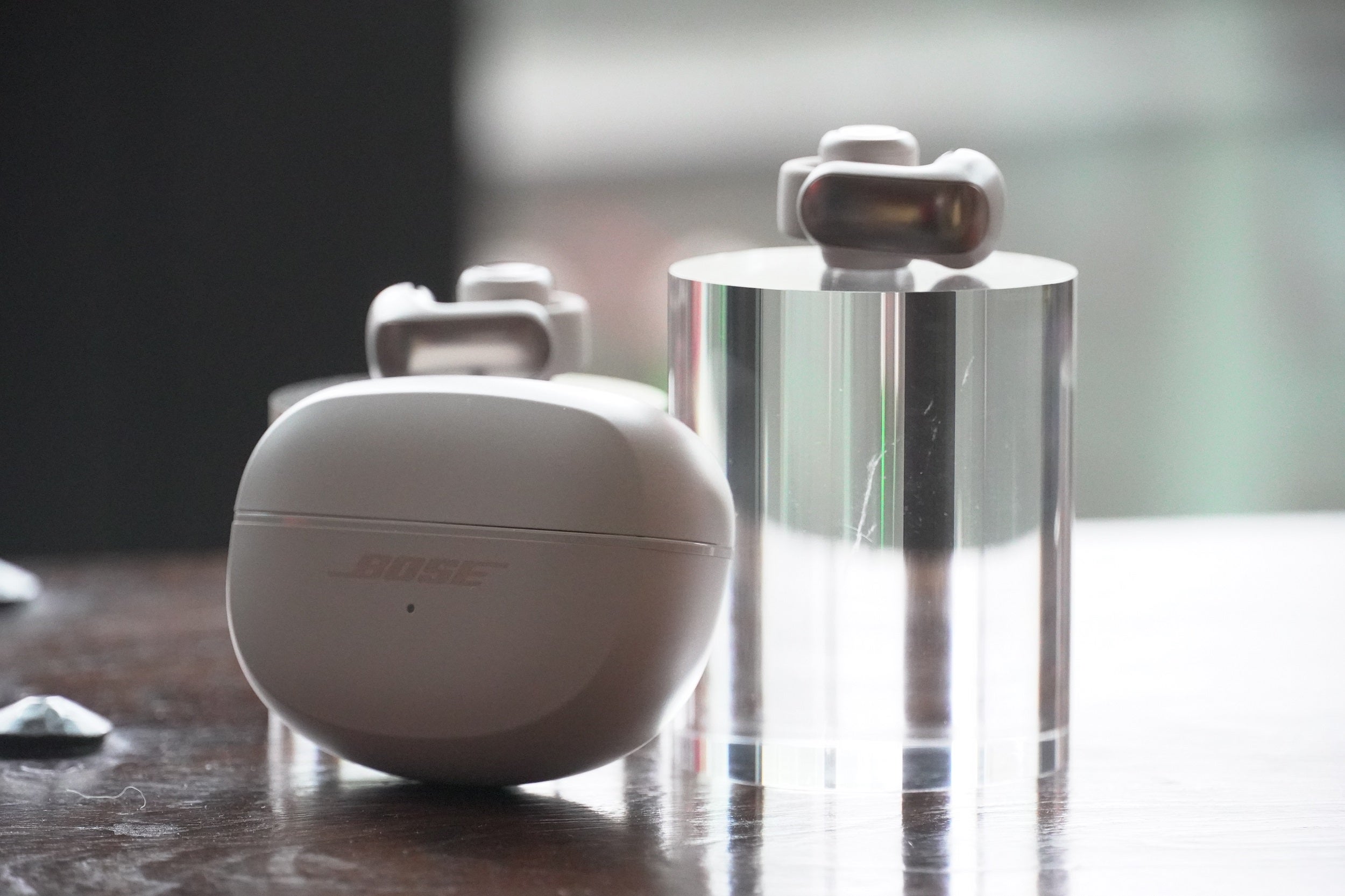Shure Aonic 50 Gen 2 Review
One of the best-sounding wireless over-ears around
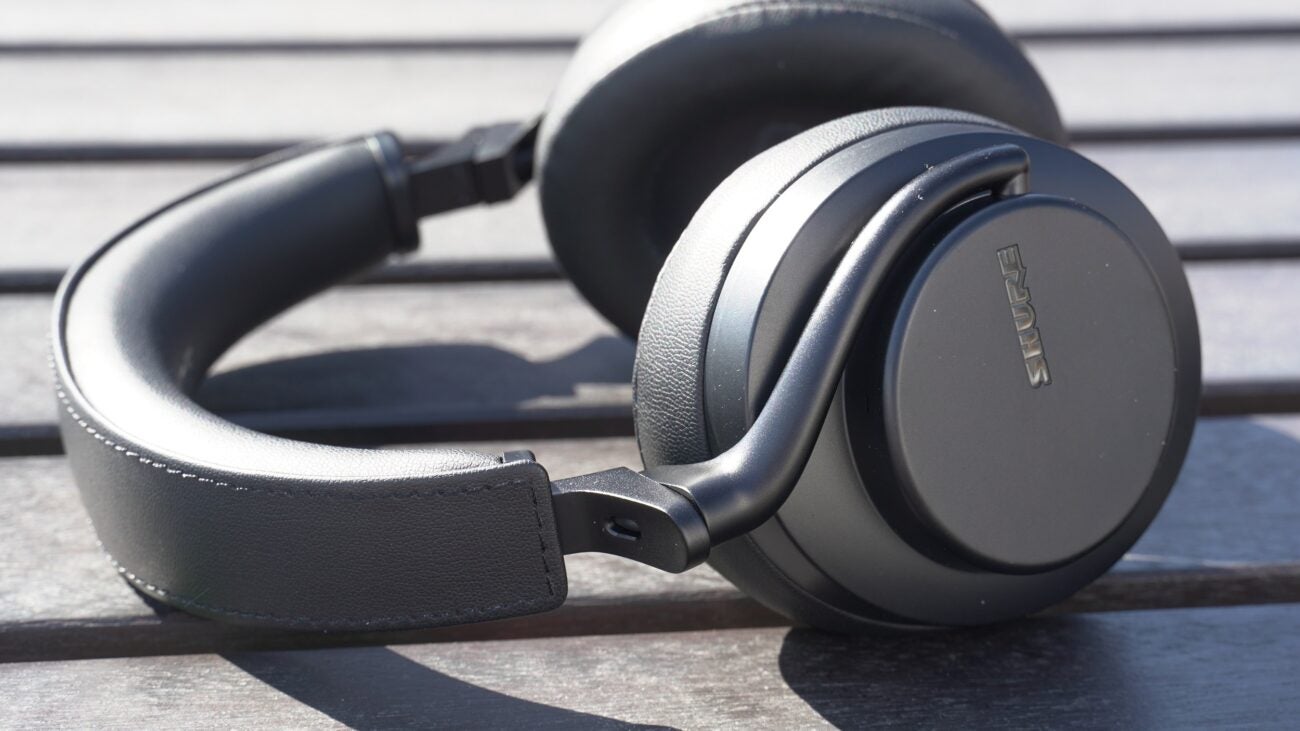
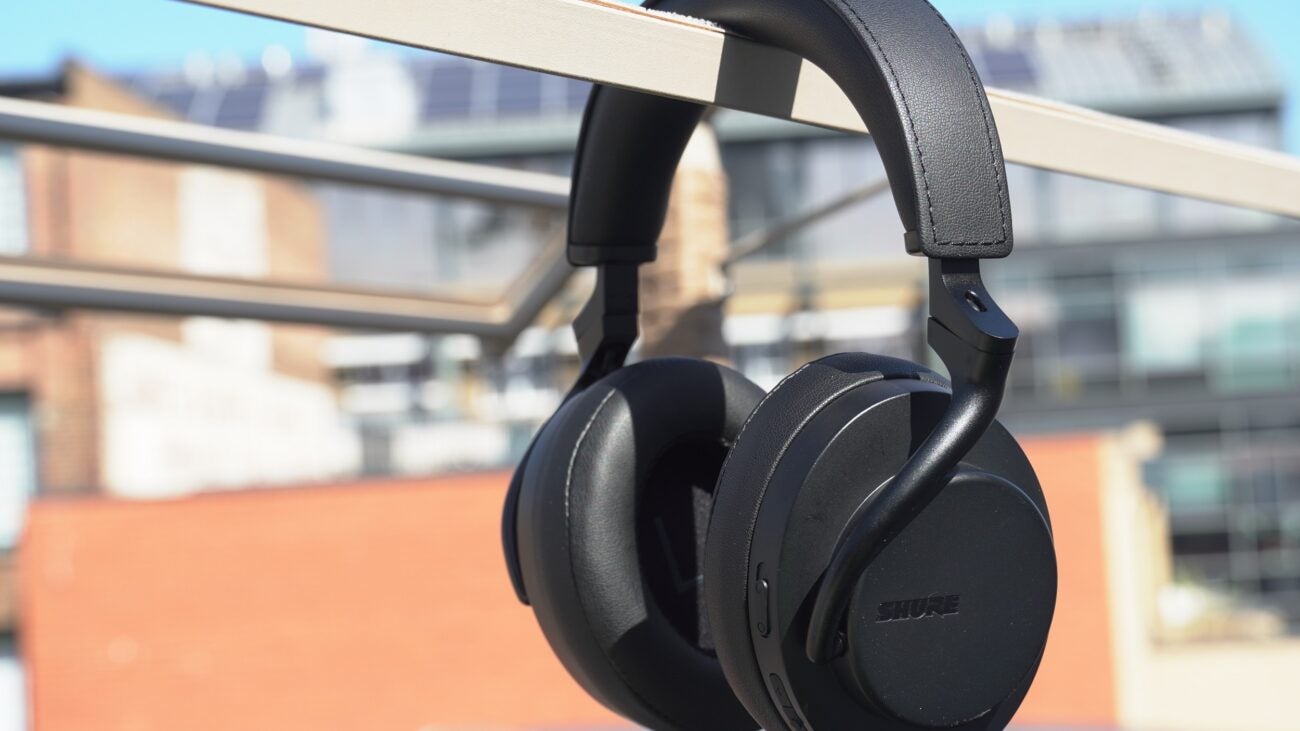


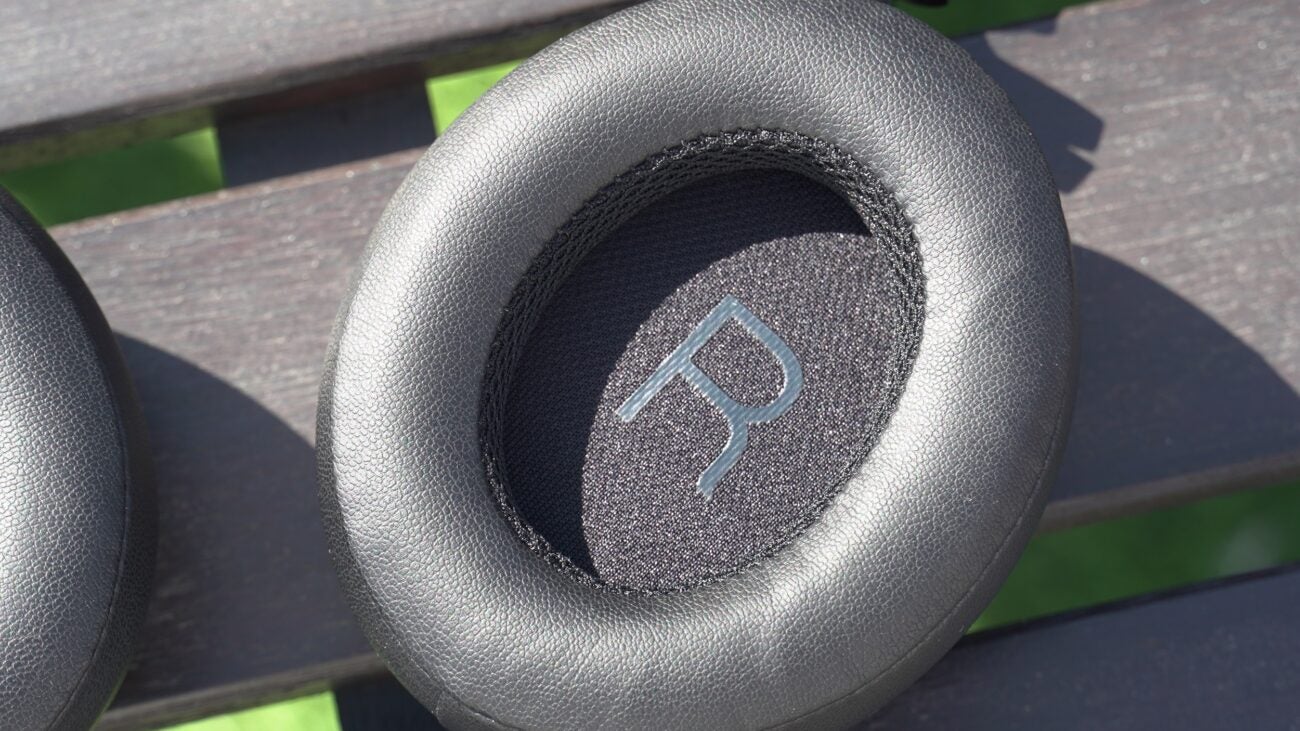

Verdict
The Shure Aonic 50 Gen 2 are one of – if not the – best-sounding wireless headphone at their price point. The noise-cancellation is very good, but affected by wind noise and bumps. If you’re after class-leading ANC, seek Bose and Sony as better alternatives.
Pros
- High-fidelity sound
- Effective noise-cancellation
- Strong wireless performance
- Competitive battery life
- Wired audio support
Cons
- ANC affected by wind noise and bumps
- Tight fit
- Average call quality in outdoor settings
Key Features
- Hybrid ANCNew Hybrid noise-cancellation system
- Spatialized AudioExpand the soundstage with a choice of four modes
- Hi-Res supportWired USB/3.5mm cables allow for 32-bit/384kHz streaming
Introduction
The Aonic 50 were part of Shure’s first wave of wireless headphones. As you can tell by the Aonic 50 Gen 2 moniker, we’ve entered its second wave along with the Aonic 215 Gen 2.
Back in 2020, I raved about the original headphones, claiming there “may not be a better-sounding pair of wireless headphones” in a year that featured the Sony WH-1000XM4.
The original wasn’t without a few issues, but the Aonic 50 Gen 2 has had its internals tweaked. Has Shure learned from its previous attempt and picked up a few new tricks? Let’s see (and hear) what they’re made of.
Design
- Same frame as before
- Takes a while to get used to the fit
- Smaller carry case
To my surprise the Gen 2 version of the Aonic 50 are the same as the original, at least on the outside. It’s the same frame, weight, size – everything. Well, save for the all-black finish. I prefer it – to my mind, it looks sleeker.
The Aonic 50 Gen 2 rather glom onto the head when worn – not necessarily uncomfortably so, but there’s a bit of shuffling and nudging to get these headphones into the right place.
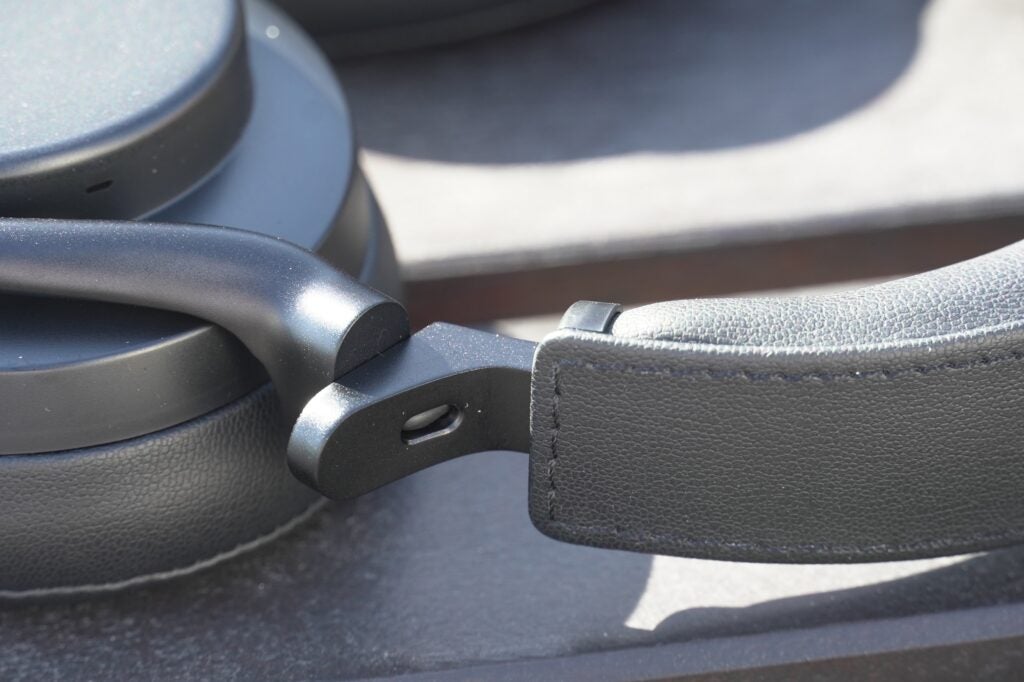
The size and weight ensure these headphones are always present – some may not like that feeling – but the clamping force keeps them secured to the head. Like the Bowers & Wilkins Px7 S2, there are little gaps where sound can leak through while turning my head around.
In terms of portability, they can be swivelled to lay flat in the, mercifully, smaller carry case; but there’s no means of folding them up as there is on the Aonic 40.
Physical buttons are located on the right earcup. There are controls for power, playback/volume, and a slider for noise-cancelling modes. You can customise what the slider does in the app.

I mentioned in the Aonic 50 review that the slider didn’t “feel like the best method” for interaction. I’m more used to it, though it can still be easy to slip past the middle ‘click’ of the slider.
A USB-C port is also available for charging, or as I’ve been doing recently, for video calls – as well as audio support. You can listen to audio via analogue means through the 3.5mm jack – you get the benefit of noise-cancellation if you choose this method.

Features
- New ANC system
- Up to 45 hours battery life
- Wealth and breadth of customisation in app
While the aesthetics of the Aonic 50 Gen 2 remain the same, the insides have undergone significant revision. The ANC system has changed, battery life extended, and wireless support revamped.
The original Aonic 50 proved effective at cancelling noise, but fell short of Sony and Bose. That hasn’t changed, as these Shures are still behind the Sony WH-1000XM5 and Bose QuietComfort Ultra Headphones, but they are an improvement over the original. However, that comes with some qualifications.
But before I get to those qualifications, I’ll focus on what the Shure does well. The new ANC system is one bought from Sony, and the Aonic 50 Gen 2 prove good at latching onto and suppressing voices, both on public transport and in outside environments. They’re good at reducing the density of crowds so they’re less prominent, and vehicles weren’t particularly noticeable walking through Piccadilly.
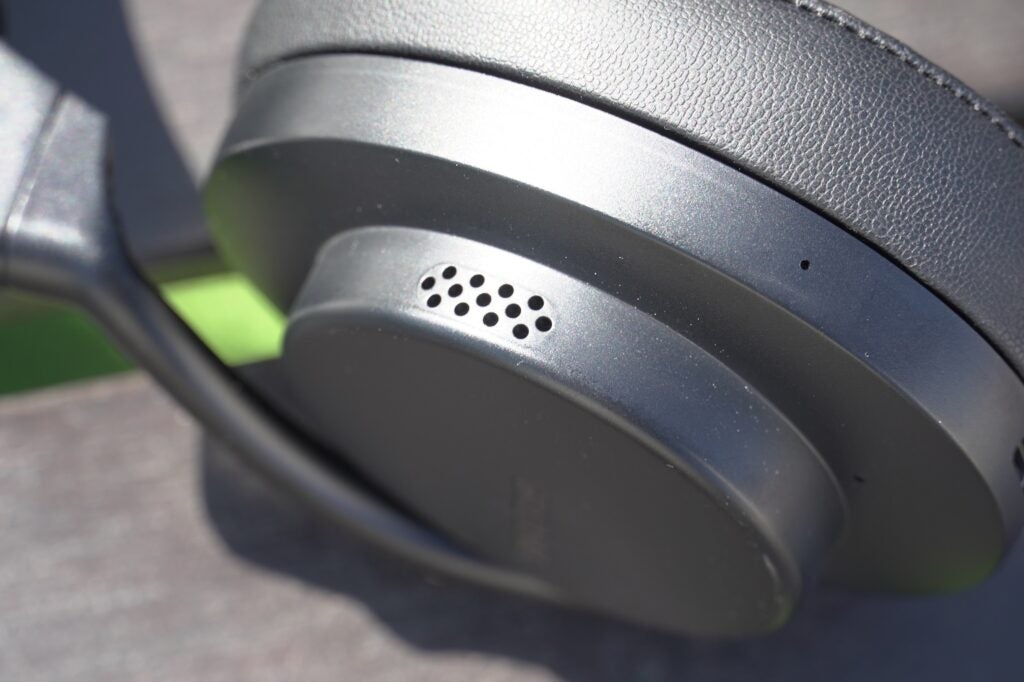
What the Aonic 50 Gen 2 are unsettled by is wind noise. When standing next to an open window on the Tube, the wind noise made it harder to hear music. When used during blustery conditions, there was noise. Worn on a plane and the vibrations from take-off and landing caused distortion, while it – like other headphones – does not like the potholes of London roads when on a bus.
While the active noise-cancellation is effective, it’s also limited. Sudden jolts or wind noise place these headphones in an uncomfortable position – the headphones’ mics could do with better shielding.
The transparency or Environment Mode (as Shure calls it) impresses. It’s open, clear, and natural enough in tone. Though, oddly enough, it shares the similar lean quality of the headphones’ sound. Switching it on doesn’t affect music volume, and you can hear conversations clearly too. At times it’s as if you’re not wearing headphones. That’s not so good if you’re in blustery conditions.
Shure claims a battery life of up to 45 hours (depending on volume, Bluetooth codec, noise-cancellation etc). That’s more than double the original, and achieved through a more power-efficient Bluetooth processor (now a Qualcomm chip).
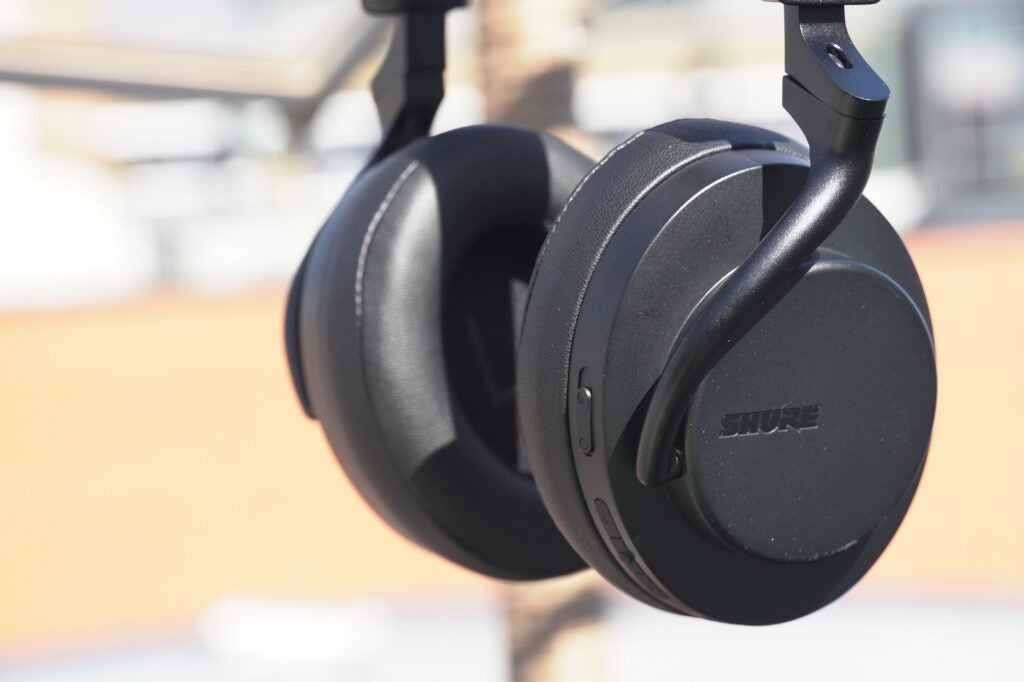
Having performed my own battery drain with volume set to 50%, the Aonic 50 Gen 2 recorded similar drops each hour – after three hours it fell to 90%. Thirty hours seems the minimum you can expect, and that puts it on level footing with the Sony WH-1000XM5.
In terms of its Bluetooth support, there appears to have been a casualty in Sony’s LDAC, despite a mention of it in the manual. Instead, it’s SBC, AAC, aptX, and aptX Adaptive with Snapdragon Sound compatibility also in the docket.
I’m struggling to think of a moment where the wireless performance struggled. I’ve strolled through busy stations such as Victoria, and populated environments such as Soho, and not encountered a single breakup.
Call quality can be considered solid in quiet areas, but in blustery conditions it’s very hard for what I’m saying to be heard. Any time a vehicle went past or there was construction work the headphones would pick it up too. They’re best suited to indoor use, and having used them for Zoom video calls, people noted the pickup of my voice was clear.
Moving on to the ShurePlus Play app, and that continues to be an intuitive affair with lots of much appreciated customisation. There are EQ profiles (Loudness, Bass Bost, Vocal Boost among others) along with a four-band option to adjust frequency, bandwidth, and gain settings.

You can play local music files through the app, and there is adjustment of ANC levels. Options include MaxAware, Max, Moderate, and Light; with MaxAware activating the headphone’s Environment Mode. You can also tweak how much of the outside world gets through, and by toggling PausePlus on, it automatically triggers the mode whenever music is paused.
Spatializer offers four modes, well, actually three: None, Music, Cinema, and Podcast. They alter the soundstage to what you’re listening to or watching, whether that’s making the soundstage bigger or putting the emphasis on voices. Just to be clear, this isn’t Dolby Atmos spatial sound, just a bigger, wider soundstage to listen in.
USB Audio Mode offers two choices: Communication or Hi-Res Listening. The former supports 16-bit/48kHz playback, with “microphones and listening features available”. If you want to use the headphones for the video calls, this is that mode.

Hi-Res Listening boosts playback up to 32-bit/384kHz. Noise-cancelling is disabled as is the Spatializer feature.
You can also adjust the Bluetooth multipoint feature with Static and Dynamic options. That’s a choice between being rooted to one device or switching whenever audio is played. And the customisable slider can be programmed for ANC, Equalizer, or Spatializer presets. It’s the breadth of personalisation that I find impressive, turning the Aonic 50 Gen 2 into a different proposition, depending on what you want to use them for.
Sound Quality
- Sharp, energetic, precise sound
- Punchy extended bass
- Leans towards neutrality
Shure still uses the same 50mm drivers, and like the ANC system, tweaks have been made. Compared to the original Aonic 50, there’s less signal noise when music is playing, the newer model sounds a little clearer and sharper. The bracingly neutral sonic signature remains, but a listen to David Bowie’s Modern Love presents a bigger presence in the low frequencies; there’s more energy and drive to the track, and the soundstage is brought further forward.
The effect of bringing the soundstage forward is one of being immersed in the music. With rapid, energetic tracks, listening through these headphones feels full on. I feel the Gen 2 isolates voices slightly better in Phoebe Bridger’s Garden Song – there’s a bigger focus in a midrange that sounds neutral, sharp, and quite lean as if stripped of any fat.
Treble registers with more force in GoGo Penguin’s Erased by Sunlight – there’s more sharpness at the top end of the frequency range and more extension at the bottom.
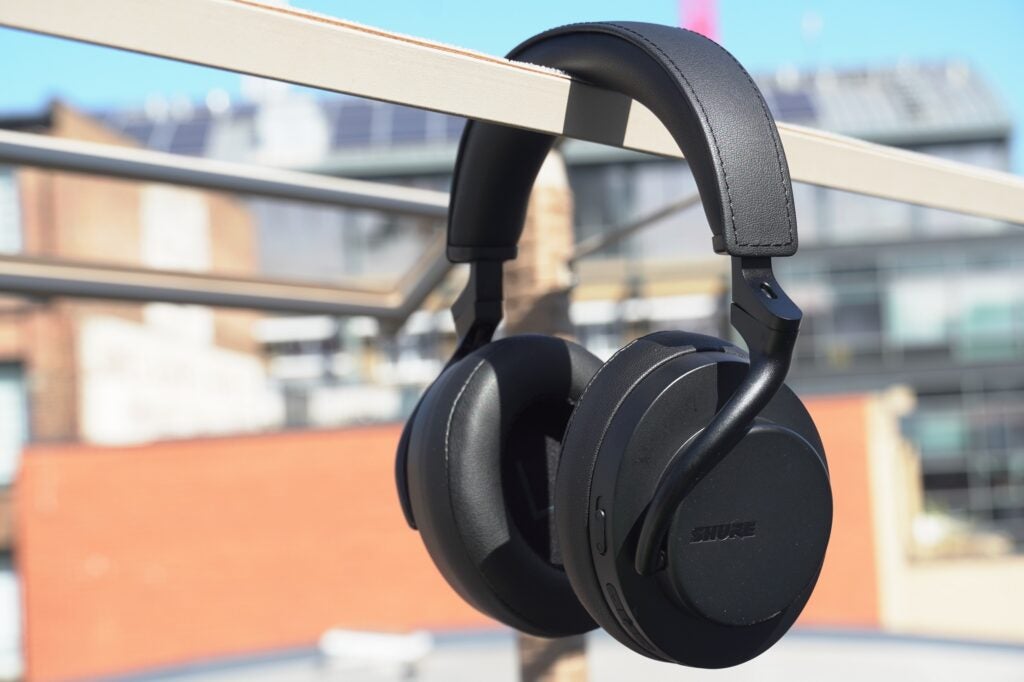
What I really wanted to know, and I suppose you do too, is how the Aonic 50 Gen 2 measures against its peers. Could it, like the original, best those in its class again?
A listen between it and the Sony WH-1000XM5 showed the Sony organises the soundstage differently – voices have a larger presence on the Shure – but otherwise they’re evenly matched. The Shure’s soundstage sounds a little clearer, but I can’t tell much of a difference between both headphones’ treble response. The Sony carries forth richer bass with Lianne La Havas’ Bittersweet and a smoother tone with her vocals compared to the Shure’s crisper tuning.
The Philips Fidelio L4 takes a warmer approach, which makes this easier to call. Treble registers brighter, bass is bigger and hits with more punch, and a listen to Takuya Kuroda’s Everybody Loves the Sunshine sees the Shure emerge with more clarity, punch, and sharpness.
The Bose QuietComfort Ultra Headphones are smoother than the Shure’s crisper tuning, there’s less of a kick to the percussion in Everybody Loves the Sunshine but overall, I think the Shure scrubs up more detail, offers more vigour with its sound; while the Bose is a little duller in how it handles highs, not as sharp or as defined.

Dynamically they communicate highs and lows well. The tuning of its midrange can sound slightly sharp and coarse in Mama Haze’s Can’t Stop This Fire and Boygenius’ Ketchum, ID; the leanness of the sound contributes to a slightly sibilant tone.
And through a wired USB connection, the Shure Aonic 50 Gen 2’s performance is perhaps more balanced and measured – though I’d wager different volume levels play into that assumption – but the character, shape, and tone of the headphones’ sound remains the same. It’s a neutral, uncoloured sound with impressive levels of clarity and detail that draws out the ups and downs within the vocalist’s performance. These are exacting, high-fidelity headphones in whatever mode you choose to listen to them in.
Latest deals
Should you buy it?
If you want the best sound
In terms of clarity, the Aonic 50 Gen 2 just about edge the Sony WH-1000XM5. If you consider yourself an audiophile, these are the best-sounding headphones within their price category.
If you’re after the best ANC
The ANC here is very effective, but it is disrupted by windy conditions, bumps, or any jolts. It’ll make you think twice about taking them on planes, trains, and automobiles.
Final Thoughts
The best-sounding wireless headphones in their price range? I would say – if you’re after precision, clarity, and high-fidelity – there’s not a wireless headphone that sounds as good as the Shure Aonic 50 Gen 2.
Are they the best wireless headphones? No, is the answer to that question. The active noise-cancellation and call performance is compromised by windy conditions and bumps, and I’d say they could be more comfortable to wear. Battery life is perhaps not as long as forecasted but still competitive.
If there’s a Gen 3 in the offing and if Shure can nail the noise-cancellation, the next Aonic 50 could be a class-leading performer.
How we test
We test every set of headphones we review thoroughly over an extended period of time. We use industry standard tests to compare features properly. We’ll always tell you what we find. We never, ever, accept money to review a product.
Find out more about how we test in our ethics policy
Tested across several months
Battery drain performed
Tested with real world use
FAQs
Despite mention of LDAC on the Shure website, when connected to an Android smartphone there is no LDAC support. The highest-quality Bluetooth codec these headphones support is aptX Adaptive.

